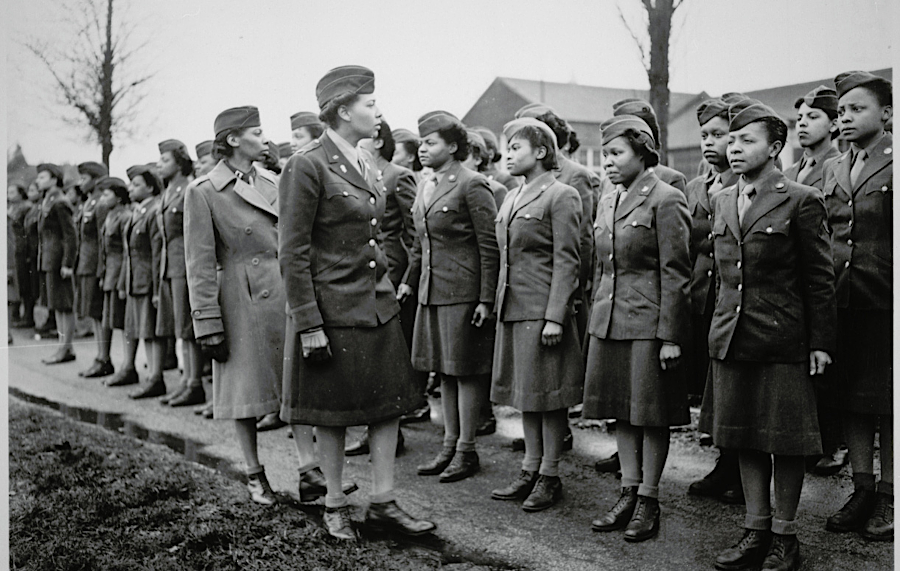 Fort Lee/Fort Gregg-Adams is located between I-95 on the east and Petersburg National Battlefield on the west
Fort Lee/Fort Gregg-Adams is located between I-95 on the east and Petersburg National Battlefield on the westSource: US Geological Survey (USGS), Prince George VA 1:24,000 topographic quadrangle (1994)
 Fort Lee/Fort Gregg-Adams is located between I-95 on the east and Petersburg National Battlefield on the west
Fort Lee/Fort Gregg-Adams is located between I-95 on the east and Petersburg National Battlefield on the west
Source: US Geological Survey (USGS), Prince George VA 1:24,000 topographic quadrangle (1994)
Camp Lee in Prince George County was established in 1917. It was named in honor of Confederate General Robert E. Lee, commander of the Army of Northern Virginia from 1862-65. It was a large facility with a population exceeded in Virginia by only Richmond and Norfolk. The 80th Division and the 37th Division trained there before being deployed to Europe, though World War I ended before the troops in the 337th Division crossed the Atlantic Ocean.
At the end of the war, the Federal government transferred the land to the Commonwealth of Virginia. The state used it as a wildlife preserve, except for the portion donated to become part of Petersburg National Military Park.
Camp Lee was reopened in October 1940 as World War Two started in Europe. By 1945, 300,000 American soldiers had completed training there. The US army retained the facility for quartermaster operations and training after the war, a function still performed there. Camp Lee boomed again during the Korean War, and was renamed Fort Lee.1
As part of the effort to purge the names of Confederate officers from US military bases, Fort Lee was renamed Fort Gregg-Adams on April 27, 2023. The name change for the fort where 70,000 US Army personnel train annually honored Lt. Gen. Arthur J. Gregg and Lt. Col. Charity Adams, two black soldiers in the US Army who managed logistical operations.
Charity Adams was the first black woman commissioned into the Women's Auxiliary Army Corps. She was responsible for the postal unit, the "Six Triple Eight" battalion in England and then France. It unclogged a backlog of stockpiled letters to and from military personnel in Europe during World War II, processing 17 million pieces of mail at a rate of 200,000 letters per day to maintain morale both at home and on the front.
There were 49 black women from Virginia in the 6888th Central Postal Directory Battalion. By the end of World War II, Adams had been promoted to Lieutenant Colonel. That was the highest rank available for a woman at the time, except for the colonel who was the Women's Army Corps director.
 Major (later Lieutenant Colonel) Charity Adams commanded the 6888th (Six Triple Eight) Postal Battalion when it was sent to England in 1944
Major (later Lieutenant Colonel) Charity Adams commanded the 6888th (Six Triple Eight) Postal Battalion when it was sent to England in 1944
Source: National Veterans Memorial and Museum, Pioneering Women: Lieutenant Colonel Charity Adams Earley, U.S. Army
Arthur Gregg, who had enlisted in 1945, was commissioned an officer after the armed forces were desegregated in 1948. Though President Truman issued the desegregation order, leaders such as Gregg had to overcome institutional traditions and racism to put the order into practice. He personally desegregated the Fort Lee Officers Club in the 1950's. The Army's award for logistics innovation and excellence is named after Lieutenant General Arthur J. Gregg.
Lt. Gen. Arthur J. Gregg became the first black three-star general in the US Army. He was the highest-ranking black officer when he retired in 1981, after a career in logistics. Until Fort Lee was renamed, no US military base ever had been named after someone who was still alive. He lived to be 96, dying on August 22, 2024.
When Fort Lee was officially renamed Fort Gregg-Adams a year earlier, Gregg attended the ceremony in person:2
In 2025 President Trump restored the previous names of US military bases, despite legislation prohibiting the use of Confederate names. His approach was to find soldiers with the same last name as the Confederates and rename the facilities after them.
The announcement that Fort Gregg-Adams would be named Fort Lee again revealed his perspective, when President Trump said he would create "Fort Robert E. Lee."
The US Army had already identified another person named Lee who was not associated with the Confederacy. It found a black veteran who had served as a Buffalo Soldier after the Civil War. Military officials said Fort Lee was being renamed after Private Fitz Lee, who won the Medal of Honor in the Spanish-American War.3